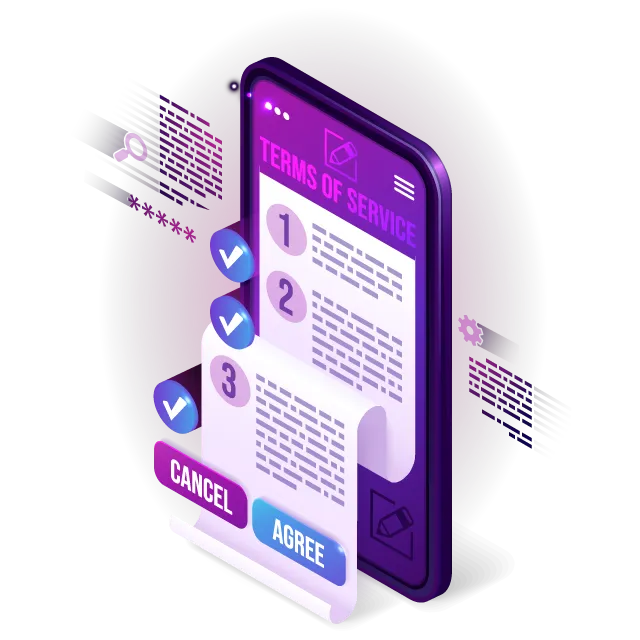Cloud Penetration Testing
Let us secure the Security And Reliability Of Your Cloud Services by Conducting A Comprehensive Vulnerability Assessment And Penetration Test.
In 2023, cyber attacks will happen every 11 Sec!
Get authentic VAPT results with our comprehensive Cloud Pen Testing and skip the hassle of the traditional agency hunting process, proposal submission, consulting, to-and-fro negotiations, etc.



Know your key points
What is Cloud penetration testing?
Cloud penetration testing is the practice of performing offensive security tests on a cloud in order to identify security flaws before hackers do. The main aim of cloud penetration testing is to evaluate how effective the security controls are and identify any vulnerabilities that can be safely exploited and remediated before they can be exploited by malicious attackers.
What distinguishes cloud penetration testing from standard penetration testing?
Penetration testing, in simple terms, refers to conducting security tests on a system, service, or network to identify its vulnerabilities. On the other hand, Cloud penetration testing involves simulating an attack on your cloud services to evaluate their security.
Traditional penetration testing methodologies are not cloud-native and only focus on processes relevant to on-premise environments. Unlike traditional penetration testing, cloud penetration testing focuses on cloud-specific configurations, passwords, applications, encryption, APIs, databases, and storage access. It also requires specific expertise and takes into account the Shared Responsibility Model, which defines who is responsible for different components within a cloud infrastructure, platform, or software
Cloud penetration test Benefits & Purpose
Invesics Cloud penetration testing helps organizations improve their overall cloud security, avoid breaches, and achieve compliance. Below are some key benefits.
- Secure cloud applications from potential hackers
- Prevent information stealing
- Prevent cross-client information leakage
- Prevent monetary loss
- Prevent reputational loss
- Induce confidence in customer
- Increased ROI for IT investments
Cloud penetration testing is designed to enhance the overall security of a cloud system. Professionals use cloud penetration testing to evaluate its vulnerabilities and strengths. Cloud penetration testing helps to:
- Identify risks, vulnerabilities, and gaps
- Impact of exploitable vulnerabilities
- Provide best practices in maintaining visibility
- Determine how to leverage any access obtained via exploitation
- Deliver clear and actionable remediation information
We Believe In Transparent Pricing
Powering your business with world class Cloud VAPT services.
Possible threats
The Most Common Cloud Security Threats
Cloud penetration testing can aid in the prevention of the following types of cloud security threats
- Misconfigurations
- Breach of Data
- Malware/Ransomware
- Advanced Persistent Threats (APTs)
- Compromises in the Supply Chain
- Inadequate Identities and Credentials
- Poor Access Management
- Insecure APIs and interfaces
- Unsuitable Use or Abuse of Cloud Services
- Shared Services and Technology Issues
Expert cyber-security solutions, at Tailor-made costing
That fit every requirement
Cloud penetration test attack vectors
Attack the cloud environment from within a customer's access context, simulating the impact of a compromised customer system or partner network.
- Obtaining access to the backbone infrastructure of a CSP.
- Endangering other cloud service tenants.
- Escalating privileges within the customer environment
Assume the role of an anonymous attacker and launch an Internet-based attack against the cloud environment.
Attack the corporation by gaining a foothold in the environment via social engineering.
-
- Compromising systems in order to collect credentials for the cloud environment.
- Interfering with systems in order to gain access to source code or other sensitive programming material.
Our service
What we can offer to you in cloud pen testing
Cloud Configuration Review is an evaluation of your Cloud configuration against industry best practices and benchmarks. A report is created that includes a summary table that shows the benchmarks and whether you are following best practices, as well as individual technical findings in more detail, detailed explanation, and remediation advice.
Cloud Penetration Testing employs a combination of external and internal penetration testing techniques to examine the organization's external posture. Unprotected server blobs and S3 buckets, servers with management ports open to the internet, and poor egress controls are examples of vulnerabilities discovered through this type of active testing.
Cloud pen-testing, whether it is a configuration review, a penetration test, or both, is concerned with analyzing the security in the following key areas:
- External attack surface – Identify all possible entry points – Web Applications, Storage Blobs, S3 Buckets, O365, SQL/RDS Databases, Azure Automation APIs, AWS APIs, Remote Desktops, VPNs, and others.
- Authentication and Authorization Testing – Ensure that users in the environment follow the Principle of Least Privilege, are protected by robust multi-factor authentication policies, and that known ‘bad passwords' are not used.
- Virtual Machines / EC2 – Azure provides two types of virtual machines: Classic and v2. These virtual machines will be tested to ensure that they are protected by Network Security Groups (NSGs – similar to firewalls) and that their data is encrypted at rest. Audits of missing patches and their effects are included wherever possible. In the places where virtual machines are publicly accessible, the external interfaces of those machines will be examined.
- Storage and Databases – This area of testing will actually analyze the storage blob permissions as well as subfolder permissions to ensure that only authenticated and authorised users can access the data contained within. Examining the database (either on virtual machines running SQL Server or on physical machines).




Policies
Authorization and Policies for Cloud Penetration Testing
Before beginning a penetration test, Microsoft (Azure) and Amazon (AWS) used to require testing authorization. This is no longer an issue, but apart from a few AWS exceptions, you are no longer required to request authorization for a cloud penetration test for Azure, AWS, or GCP.
Policy for AWS Pen Testing https://aws.amazon.com/security/penetration-testing
Rules of Engagement for Azure https://www.microsoft.com/en-us/msrc/pentest-rules-of-engagement
GCP https://partner-security.withgoogle.com/docs/pentest_guidelines.html
Relevant services
Supportive Cyber Security Services
Mobile Application Pen-Testing
Network Pen-Testing
Cloud Pen-Testing
Server Hardening
Under Attack? Need Immediate Assistance?
Reach out to our expert teammates to get solution for your Cyber Security concerns. We help to protect your organization from Data-breaches.